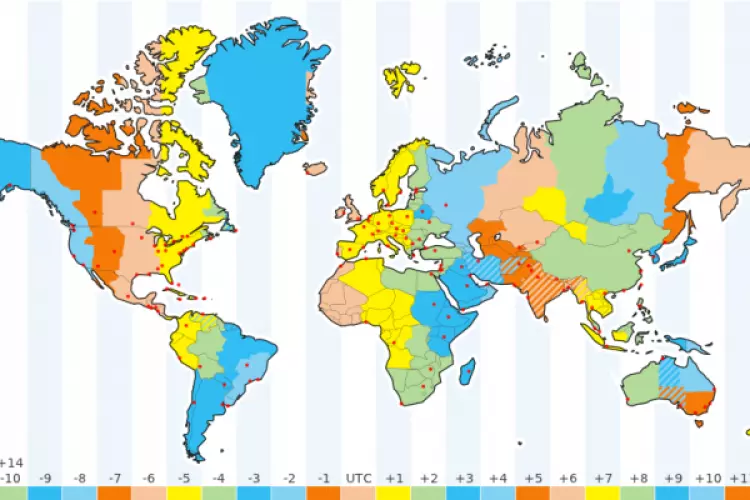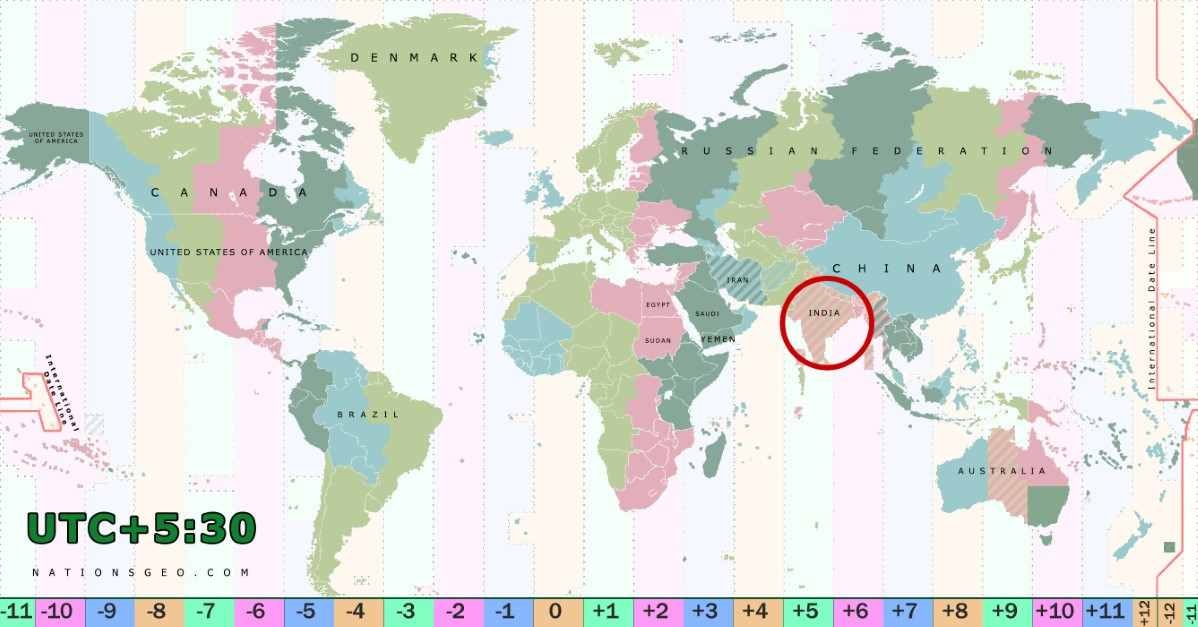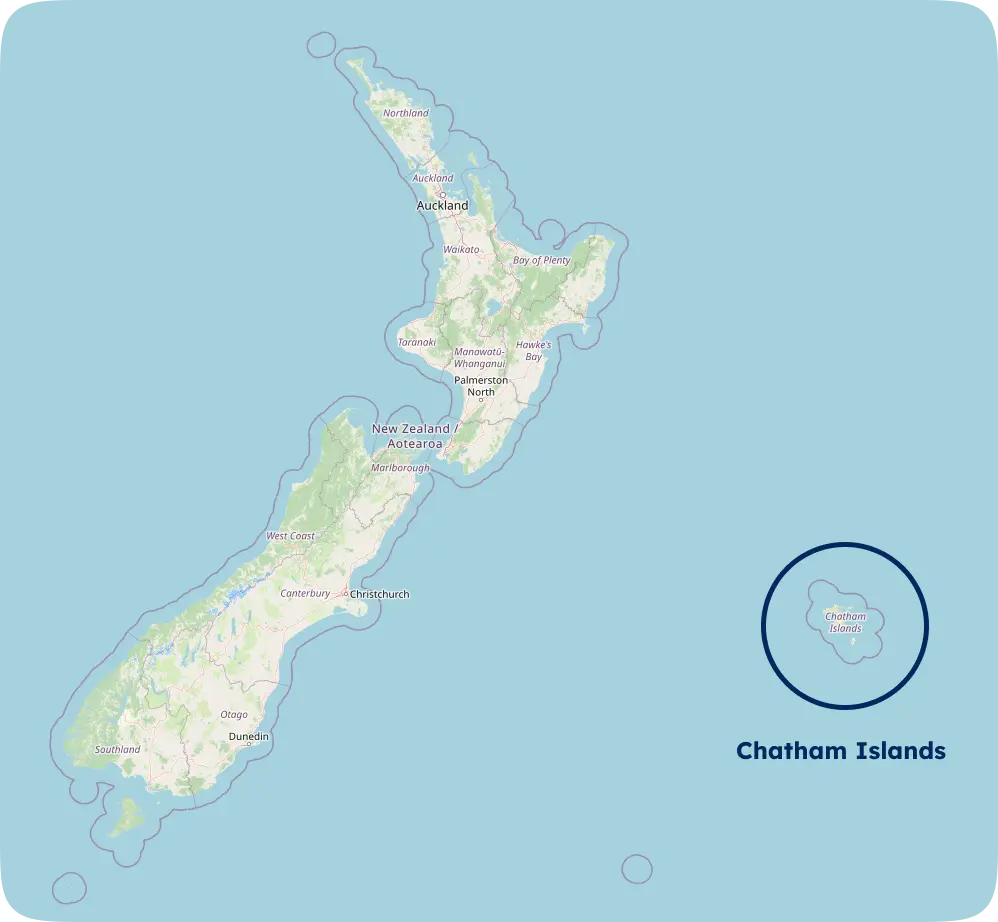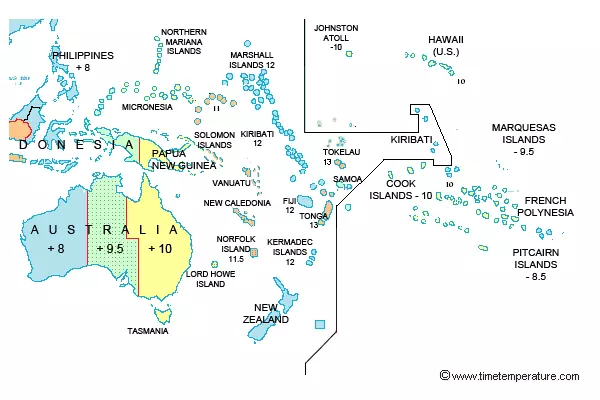In the fast-paced world of global operations, understanding time zones is more than knowing the difference between New York and Tokyo. It’s about mastering the complexities of coordinating supply chains, scheduling international meetings, and launching global marketing campaigns.
With 38 distinct local times in use worldwide (yes, you read that right) and additional variations due to daylight-saving practices and unique regional offsets, staying informed is crucial for seamless operations.
In this article, we’ll dive into the nuances of time zones, including their definition, the reasons behind their diversity, and their significant effects on a company’s global operations.
Understanding the Basics of Global Time Zones
A time zone is a geographical area where everyone follows the same standard time. Time zones help us keep activities like work, travel, and communication in sync with the sun’s position in the sky. In each time zone, local time stays consistent, so noon is generally when the sun is at its highest point.
This system comes from the Earth’s 360° rotation over 24 hours, ideally dividing the globe into 15° segments, each representing one hour. But in reality, time zone boundaries often stray from these neat divisions due to political, geographical, and social reasons, giving us 38 unique time zones.
Later, we’ll examine the map below, which shows these time zones and how they work.
The Role of Coordinated Universal Time (UTC)
Before discussing the specifics of time zone division, we need to understand the Coordinated Universal Time (UTC) concept.
The UTC is the time standard that governs the clocks and time zones worldwide.
Originating from Greenwich Mean Time (GMT) – the average solar time at Greenwich, London’s prime meridian – UTC is the benchmark for establishing time variations across zones.
For instance, being in a UTC+5 time zone indicates a 5-hour advancement from UTC.

Navigating the Diversity of Time Zones
Time zones are far more complex than dividing the globe into 24 equal parts. Geopolitical distributions and daylight-saving time adjustments influence their number and spread.
In this section, we delve into both separately.
The Impact of Geopolitical Borders on Time Zones
Contrary to the expectation that time zone borders align with the 15° longitude intervals reflecting the Earth’s hourly rotation, political and geographical considerations dictate these borders often.
For instance, China adopts a single time zone across its vast territory, spanning roughly 60° of longitude, for national unity.
Similarly, the European Union harmonizes its time zones—Central European Time (CET), Eastern European Time (EET), and Western European Time (WET)—across member states, disregarding their longitudinal positions.
In contrast, countries like India and Pakistan, or North and South Korea, establish their time zones based on political relations, resulting in time differences with neighboring countries despite geographical proximity.
How to classify the 38 World Time Zones
💡 Disclaimer: There is no single official global authority that dictates time zones, and different international organizations, standards, and national governments may have varying interpretations and regulations. The discrepancies in the number of time zones (e.g., 24, 37, 38, or 40) can be attributed to factors such as standard time zones, fractional time zones, Daylight Saving Time, and political and historical considerations.
The 38 existing time zones can be distributed between 3 groups:
Basic time zones
In a simpler world, each time zone would cover 15 degrees of longitude, with a time difference of one hour to adjacent time zones. It would bring the total number of time zones to 24.

Special offset time zones
Some time zones are offset by special increments of 30 minutes and 45 minutes (not in even 1-hour increments). There are 11 time zones like this in the world.
For instance, India operates on UTC+5:30, positioning it 5 hours and 30 minutes ahead of Coordinated Universal Time (UTC).

Bonus time zones
Four time zones are assigned to islands in the Pacific, so they aren’t obvious on that map unless you zoom in.
These exist to keep islands from being on different calendar days than other places with close links. That’s how Baker Island (USA) and Teraina (Kiribati) are so close but have a massive 26-hour time difference.
Time Zone Offsets: Daylight Saving Time
The variation in time zone numbers also stems from the seasonal adjustment of offsets.
It is due to the observation of daylight saving time (DST), where clocks are set forward by an hour during summer months to extend evening daylight.
This shift aims to conserve energy and enhance productivity. Not all countries or regions adopt DST, and its application dates can differ.
Such disparities can introduce challenges for international travel and commerce, underscoring the complexity of our global timekeeping system.
The special case of Chatham Islands
The Chatham Islands, a remote part of New Zealand, have a unique time zone that sets them apart from the rest of the world. The islands operate on UTC +12:45 during standard time, making them one of the few regions with a 45-minute offset. During daylight saving time, the Chatham Islands advance their clocks by one hour to UTC +13:45.

Unique and Exceptional Time Zones
Certain time zones stand out due to their nonconformity to standard practices.
China
China, for example, despite its vast geographic size, uses a single time zone across the country, UTC+8.
This results in significantly late sunrises and sunsets in its western regions and unusually early ones in the east.
Pacific Islands
Another peculiar case is the International Date Line (IDL), an imaginary demarcation that separates two calendar days and zigzags to avoid dividing islands and countries.
Kiribati, an island nation in the Pacific, shifted its time zone from UTC-10 to UTC+14 in 1995, becoming the first country to welcome the new millennium. This change also introduced a 26-hour time difference with some of its neighboring islands across the IDL.

Not the Same as Local Time: Understanding the Discrepancies
Geopolitical influences on time zones can lead to mismatches between the official and local solar times, affecting daily life and societal well-being.
In western China, for instance, the uniform UTC+8 time zone results in late sunrises and sunsets, disrupting local routines.
Spain faces a similar issue, with its adherence to CET causing late daylight hours, impacting sleep patterns and productivity.
These cases illustrate the significant societal and economic implications of clock time and solar time discrepancies.
Current State of the World’s Time Zones
The global time zone configuration continues to evolve, as seen with Samoa and Tokelau’s shift to UTC+13 in 2011 for closer alignment with key trading partners and Russia’s adjustments to its time zones for better administration and communication.
These changes underscore the fluid nature of global time zones, reflecting the shifting needs and preferences of the international community.
Conclusion
Understanding the complexities of time zones is crucial for global enterprises striving for seamless operations. The global timekeeping system can be intricate, with 38 distinct local times currently in use and additional variations from daylight-saving practices and unique offsets.
Businesses can navigate these differences effectively by recognizing the historical, geopolitical, and practical factors that shape time zones. Utilizing reliable tools and staying informed about changes, such as daylight-saving time adjustments, can help maintain smooth international operations. As the global landscape evolves, staying updated on time zone configurations will be essential for optimizing global business strategies.
For enterprises that rely on precise time coordination, investing in comprehensive time zone datasets and tools, like those provided by GeoPostcodes, can enhance accuracy and operational efficiency. Embrace the complexity of time zones to keep your global activities synchronized and your business running like clockwork.
FAQ
Are there 24 or 40 time zones?
There are 24 standard time zones based on each hour difference from Greenwich Mean Time (GMT).
However, including variations such as half-hour and quarter-hour differences, the total can increase to around 40 time zones globally.
Are there 37 time zones in the world?
When accounting for standard time zones and additional variations such as half-hour and quarter-hour offsets, there are approximately 37 time zones in use around the world.
How many time zones are there in the US?
The United States has six main time zones: Eastern, Central, Mountain, Pacific, Alaska, and Hawaii-Aleutian. Additionally, the US territories follow different time zones.
How many time zones are there?
There are twenty-four time zones globally, each representing a one-hour difference from Greenwich Mean Time (GMT).
Do all regions observe daylight saving time?
Not all regions observe daylight saving time; it varies depending on the country and even within regions of the same country.
Which major cities share the same time zone?
Major cities like New York and Toronto share the Eastern time zone, while cities like Chicago and Dallas share the Central time zone.
How are United States time zones divided?
The United States time zones are divided into the Eastern time zone, central time zone, mountain time zone, and Pacific time zone.
Can a country have multiple time zones?
Countries like the United States and Russia have multiple time zones due to their vast geographical areas.
How can I find my own time zone on a map?
You can find your time zone using a time zone map, which shows the division of time zones globally.





